Hayley Rutger, Mote Marine Labs
from The Fishing Wire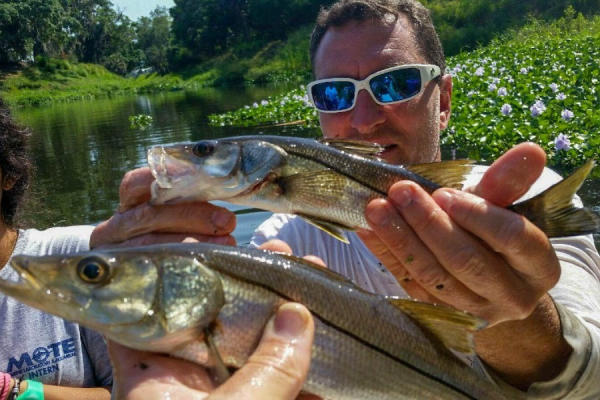 Mote’s Dr. Jim Locascio holds a juvenile snook from a Sarasota County canal. Credit: Dr. Nate Brennan/Mote Marine Laboratory
Mote’s Dr. Jim Locascio holds a juvenile snook from a Sarasota County canal. Credit: Dr. Nate Brennan/Mote Marine Laboratory
Dozens of fish species — including common snook and largemouth bass — use certain parts of the upper Phillippi Creek system, according to the first fish survey of this urbanized network of canals, retention ponds and wetlands in Sarasota County, Florida.
The survey — led by Mote Marine Laboratory and funded by Sarasota Bay Estuary Program (SBEP) — found the highest numbers and diversity of fishes around upper creek areas mimicking natural habitat: curving canals or ponds with wetland vegetation and sections of slower-moving water. Less naturalistic canals, with shorelines straightened for optimum drainage, generally hosted fewer fish of fewer species.
Urban waterways can lose ecosystem value — for example, ability to support economically important sport fish — due to pollution, altered water flow and loss of natural habitat. Scientists around the nation are investigating how to help these waterways better serve wildlife, ecosystems and communities. Phillippi Creek drains approximately 60 square miles (145 square kilometers) of Sarasota County land, with downstream waterways richer in natural habitat and upstream waterways bearing a clearer human fingerprint: more straightened, channelized canals, sediment traps and retention ponds.
“We want to understand how to balance the role of these waterways between stormwater management and ecosystem function,” said Mote staff scientist Dr. Jim Locascio. “Can upper Phillippi Creek be enhanced to benefit fish without sacrificing its performance as a drainage system? That’s what we hope our survey results will lead into. First we needed to learn how the system is functioning and understand whether some creek areas are more productive in supporting fish.”
“Typical stormwater drainage systems were designed to transport excess water directly from residential areas to the sea; this concentrates flow through a narrow area,” said Mote Staff Scientist Dr. Nate Brennan, who was also involved in the project. “Such systems can experience flash-flooding as well as very reduced flow, and they can transport nutrient-laden sediment downstream, all of which affects how many species can survive in the canals themselves and in downstream ecosystems such as estuaries and seagrass flats. However, slower and more consistently flowing waterways can be refuges with higher diversity of prey animals as well as high-value, predatory fish such as snook and largemouth bass. Upper Phillppi Creek is dominated by straightened canals, but it also includes good refuge areas and sites with potential to create more; that really interests us.”
Since the 1980s, Sarasota County has significantly enhanced its measures to prevent floods and enhance water quality, most commonly using wet ponds. Ponds help delay the discharge of runoff, capture sediments and protect downstream ecosystems. County officials and Mote scientists each want to know whether further enhancements will help support fisheries.
Based on discussions with Sarasota County and SBEP staff, Mote scientists surveyed fish and select invertebrates (such as shrimp) at about 70 sites – most along upper Phillippi Creek, north of Bahia Vista Street and east of Beneva Road, and one downstream from this junction: Red Bug Slough preserve. Sites represented three habitat types: canals with generally straightened shorelines maintained to drain storm water; secondary stage canals with more bent shorelines, restored wetland areas, a natural preserve and sediment traps; and retention ponds known as the Celery Fields.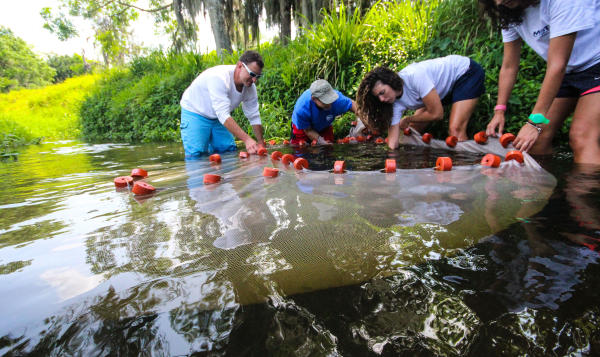 From left: Mote scientists Dr. Jim Locascio, Dr. Nate Brennan, and Greer Babbe use a seine net to survey for fish in Sarasota County’s stormwater canal system. Credit Conor Goulding/Mote Marine Laboratory.
From left: Mote scientists Dr. Jim Locascio, Dr. Nate Brennan, and Greer Babbe use a seine net to survey for fish in Sarasota County’s stormwater canal system. Credit Conor Goulding/Mote Marine Laboratory.
“Canals are a common feature around Florida and around the world, which means the results of this study could be far reaching,” said John Ryan, Environmental Manager for Sarasota County’s Stormwater Environmental Utility. “Nature friendly drainage designs could add value to the lives of a great many people who live on the world’s coasts.”
During March-May and September-November 2016, Mote scientists and interns used purse seine nets to catch, identify, count and release fish and invertebrates, measuring a sample of them. The scientists documented temperature, salinity, dissolved oxygen and the presence or absence of vegetation.
In all, the researchers counted 36,136 fishes and invertebrates in 37 scientific groups. Overall, the most abundant species were the native eastern mosquitofish (scientific name: Gambusia holbrooki), which were 46.5 percent of all animals counted. Also abundant were non-native tilapia (Oreochromis spp., 13.3 percent), native grass shrimp (Palaemonetes spp., 11.5 percent), and native sailfin molly (Poecilia latipinna, 9.2 percent). Native blue killifish (Lucania goodei), native least killifish (Heterandria formosa), and native Seminole killifish (Fundulus seminolis) were semi-abundant.
The highest biodiversity sites — with the most species and the most evenly distributed numbers of animals in each species — were secondary stage canal habitats. Their complex curves, vegetation and flow patterns can mimic natural habitat. Less biodiversity was found at retention pond sites, followed by the least naturalistic sites: canals.
Common snook (Centropomus undecimalis) — a favorite Florida sport fish — were found at 15 sampling sites in seven areas. Among those areas, 61.6 percent of snook were in secondary stage canal habitats, especially two sediment traps. All snook were juveniles that had completed their larval, or baby, stage within the past two years.
“Of the juvenile snook we found, a notable number were in sediment traps, which are used to keep sediment from moving downstream but also appear to mimic the natural systems where the snook larvae settle and become juvenile fish,” Locascio said. “In wild tidal creeks, snook may settle in terminal ponds with reduced flow. Sediment traps may be creating similar habitat as a byproduct. However, we need to better understand how the snook are affected during maintenance, when the sediments are removed. This is one good opportunity for follow-up research.”
Largemouth bass (Micropterus salmoides) juveniles and/or adults were found at 30 sites in eight areas, with 69.2 percent in secondary stage canal habitats.
According to Mote’s report, “…secondary stage canal habitat which included preserves, sediment traps and restored wetlands were most important for snook and largemouth bass and maintained the highest levels of diversity.”
“Some engineered habitats are mimicking natural habitats and functioning as recruitment areas for these fish in upper Phillippi Creek,” Locascio said. “That is a very positive finding, and there is more that could be done if additional areas can be enhanced and then monitored through future surveys.”
Locascio continued: “Some fish-friendly enhancements might even save money; for instance, say you have an area that’s difficult and costly to manage. Why not use that as a habitat restoration site, ultimately improving conditions for fish and decreasing maintenance costs such as removing vegetation?”
Other recommendations from this report include:
- Build fish-friendly features resembling the current sediment traps but varying in design to enhance their appeal to snook and bass. Then follow up with a monitoring program and fish-tagging studies to determine which designs help support fish.
- Find even more options for fish-friendly upgrades at multiple scales along Phillippi Creek by applying the current results to a mathematical model published by others in 2015. If the model applies to Phillippi Creek fish habitat, it could provide a wealth of additional ideas for fish-friendly, waterway management.
- Make better use of non-native tilapia, which are abundant in the Celery Fields retention ponds but may not travel far due to weirs that limit water flow. It the weirs could periodically release a pulse of water — and tilapia — safely and strategically, those tilapia may provide additional food to native, predatory fish downstream.
“The next steps are exciting,” added Brennan, “because they can involve eco-engineering where we consider stormwater management goals but add components like ecosystem health and societal benefits. Places like stormwater canals that are often hidden from society can actually be transformed into attractive, productive urban ecosystems that improve property value and natural productivity.”
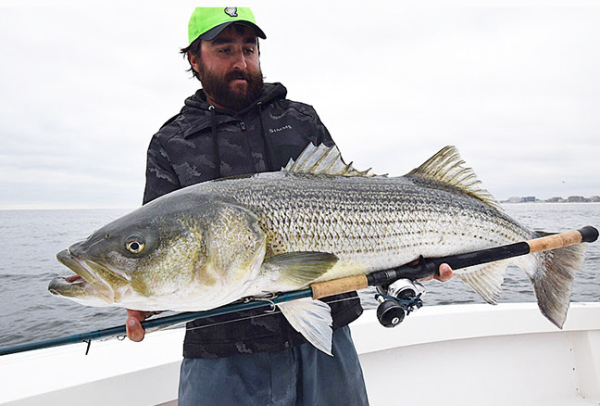 Radlof says the bass are primarily feeding on adult bunker inshore.
Radlof says the bass are primarily feeding on adult bunker inshore.  Carter is finding success on bigger trout with topwaters and suspending twitch baits, and well as Z-Man
Carter is finding success on bigger trout with topwaters and suspending twitch baits, and well as Z-Man 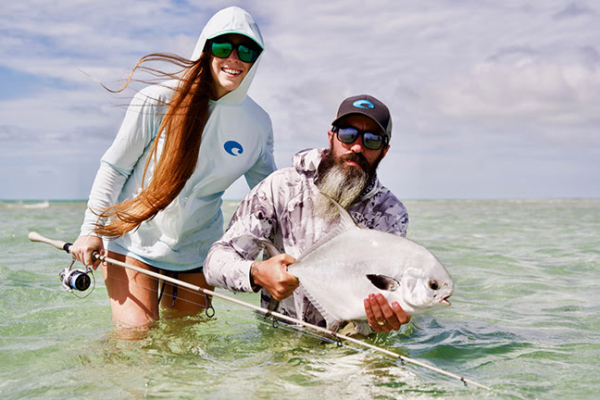 Brown touts sight fishing the flats this time of year when conditions are favorable. “I like to pair a 3000 series spinning reel with a St. Croix 7’, medium-light power, new
Brown touts sight fishing the flats this time of year when conditions are favorable. “I like to pair a 3000 series spinning reel with a St. Croix 7’, medium-light power, new 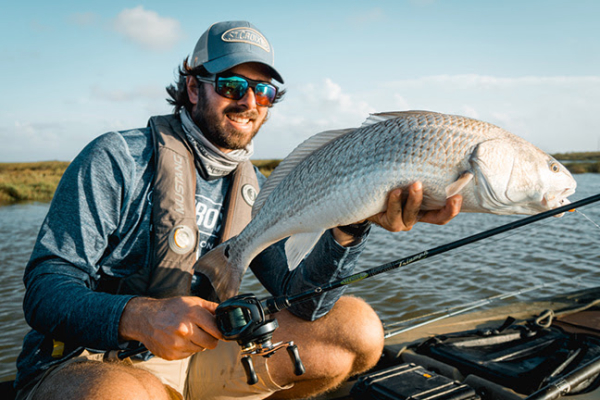 Sanderson drills down on Triumph Inshore’s varied handle options. “I preferred the 7’ version a bit better with the longer, full cork handle because I prefer to cast with two hands, but found the shorter-handled 6’8” split-grip an ideal option for wading. It’s rare to find a casting rod that performs with the lightweight jigs and baits I use so much of the time, and both of these rods excelled.”Sanderson and Gonzalez were impressed with the new Triumph Inshore rods from the start. “When I unpackaged these rods, the first thing I noticed was the surprisingly high quality of the cork and their beautiful finish,” Sanderson says.
Sanderson drills down on Triumph Inshore’s varied handle options. “I preferred the 7’ version a bit better with the longer, full cork handle because I prefer to cast with two hands, but found the shorter-handled 6’8” split-grip an ideal option for wading. It’s rare to find a casting rod that performs with the lightweight jigs and baits I use so much of the time, and both of these rods excelled.”Sanderson and Gonzalez were impressed with the new Triumph Inshore rods from the start. “When I unpackaged these rods, the first thing I noticed was the surprisingly high quality of the cork and their beautiful finish,” Sanderson says. 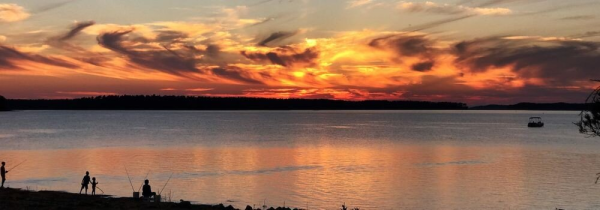 Photo courtesy Old 96 Tourism District
Photo courtesy Old 96 Tourism District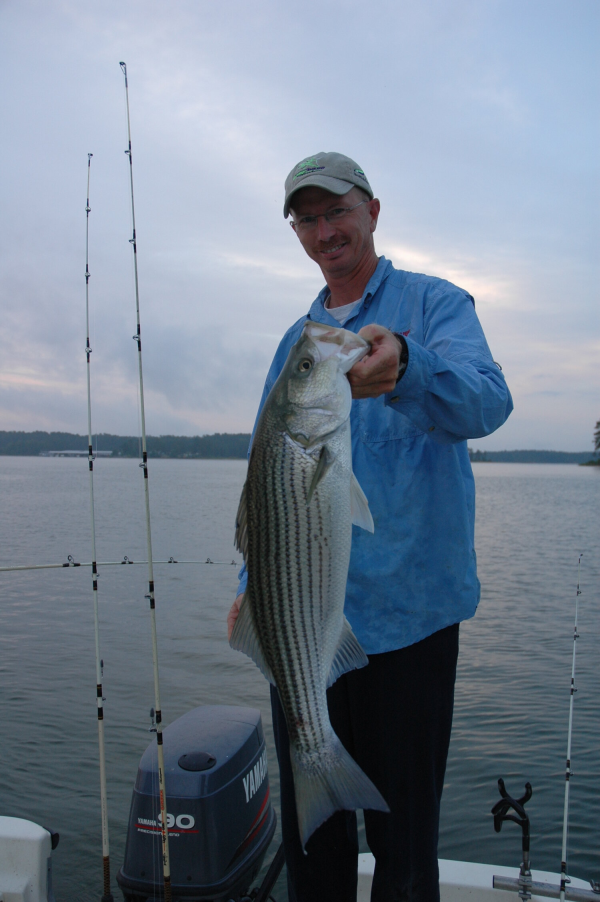 Striped and hybrid bass stocked in the lake by SCDNR’s Freshwater Fisheries Section can be successfully targeted nearly year-round at Lake Thurmond. [photo by David Lucas, SCDNR]
Striped and hybrid bass stocked in the lake by SCDNR’s Freshwater Fisheries Section can be successfully targeted nearly year-round at Lake Thurmond. [photo by David Lucas, SCDNR] S.C.-based professional bass angler Casey Ashley knows Lake Thurmond and advises fishing deepwater structure when the weather turns hot. [photo courtesy Bassmaster]
S.C.-based professional bass angler Casey Ashley knows Lake Thurmond and advises fishing deepwater structure when the weather turns hot. [photo courtesy Bassmaster] Virginia anglers are truly blessed with an abundance of trout streams in the Commonwealth. The diversity of these streams provides opportunities for every trout angler whether you prefer fishing for wild trout or stocked trout, spin fishing or fly fishing, or fishing with bait versus artificial flies and lures. No matter what you enjoy, Virginia has you covered.
Virginia anglers are truly blessed with an abundance of trout streams in the Commonwealth. The diversity of these streams provides opportunities for every trout angler whether you prefer fishing for wild trout or stocked trout, spin fishing or fly fishing, or fishing with bait versus artificial flies and lures. No matter what you enjoy, Virginia has you covered. DWR Fisheries Biologist, Steve Owens, hooked up at the Clinch Mountain Fee Fishing area.
DWR Fisheries Biologist, Steve Owens, hooked up at the Clinch Mountain Fee Fishing area.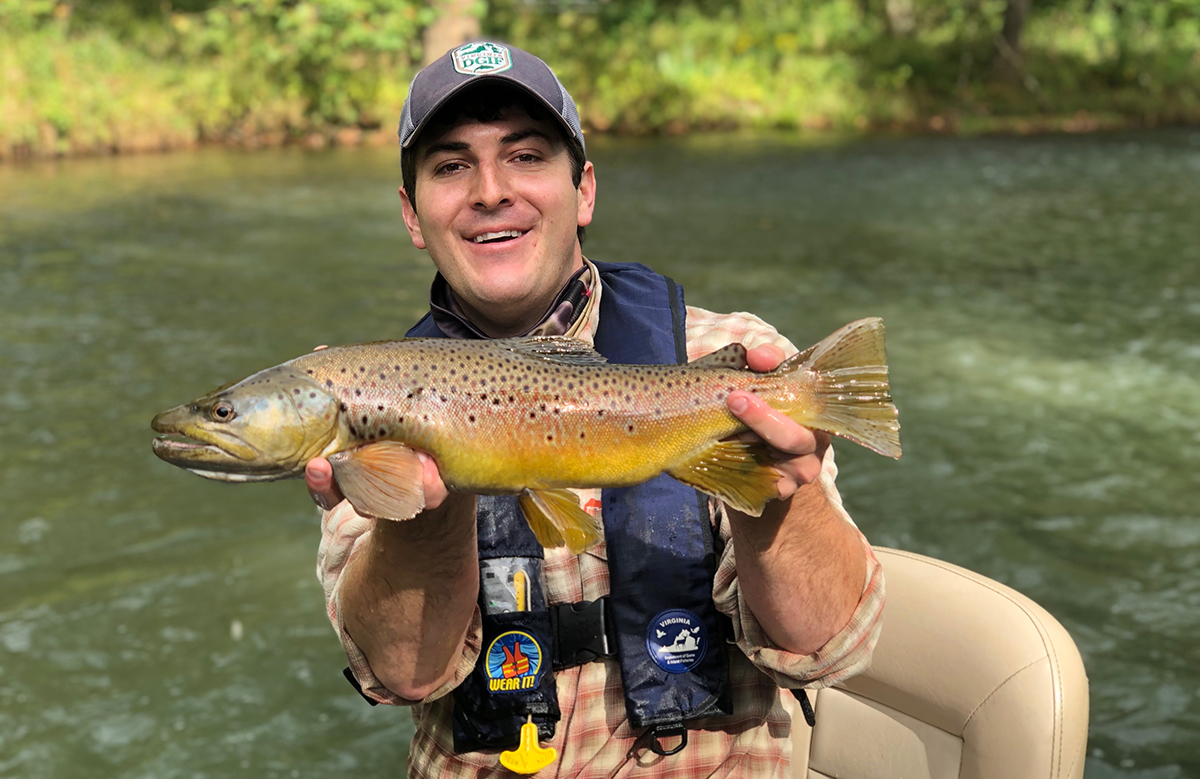 The author with a 21″ brown trout caught on a large streamer while floating the Jackson River tailwater.
The author with a 21″ brown trout caught on a large streamer while floating the Jackson River tailwater.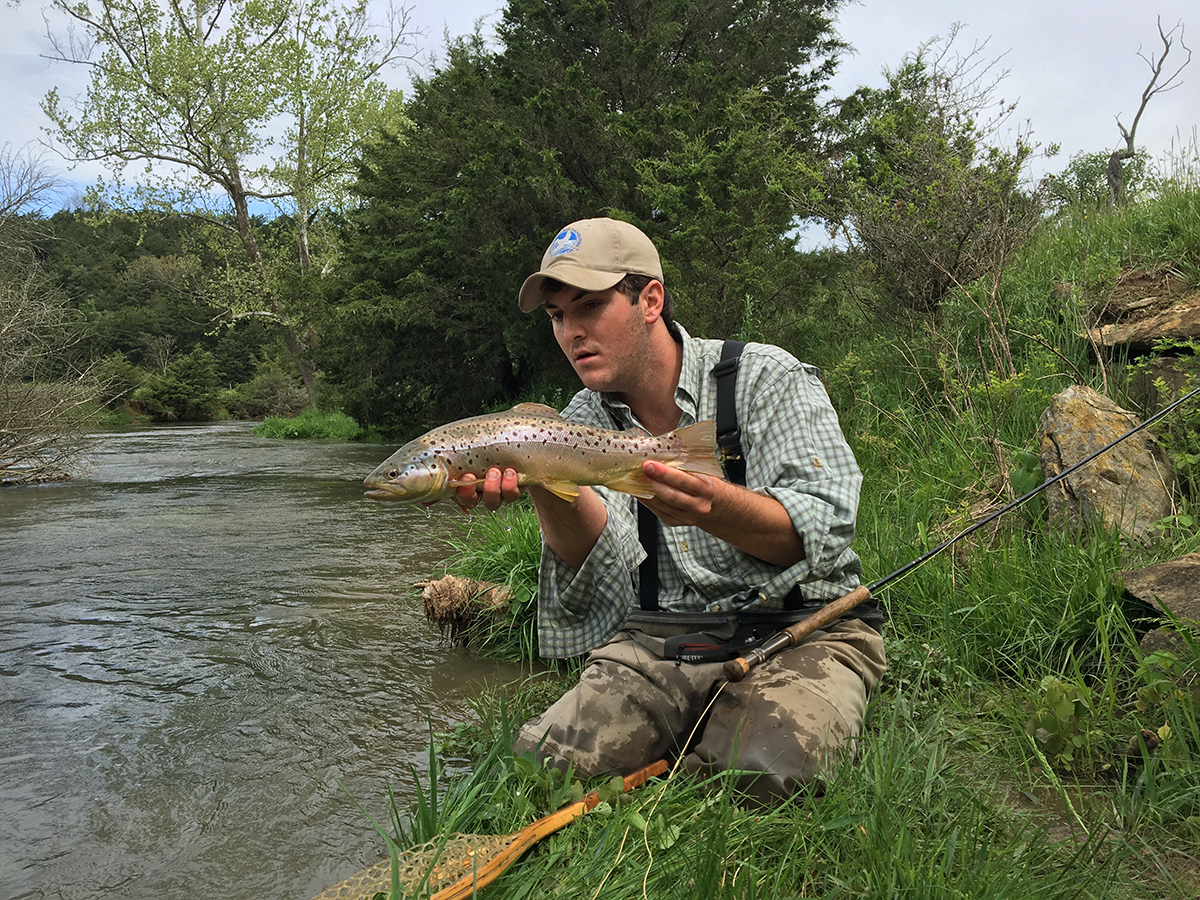 The author with a nice brown trout from the upper section of the public stretch on Mossy Creek.
The author with a nice brown trout from the upper section of the public stretch on Mossy Creek.